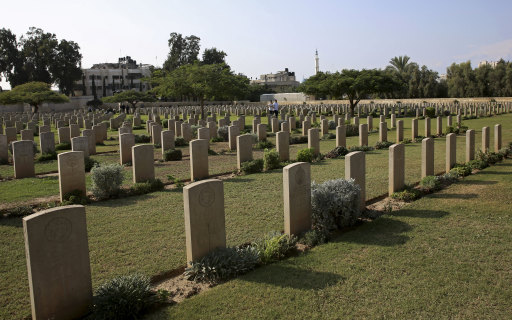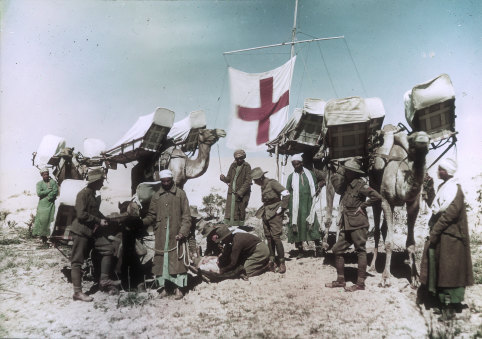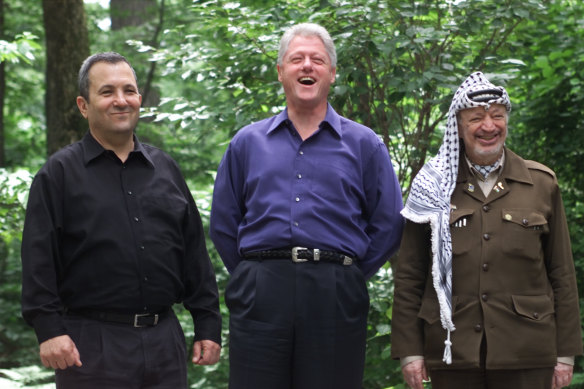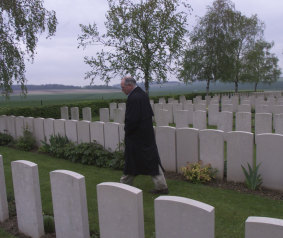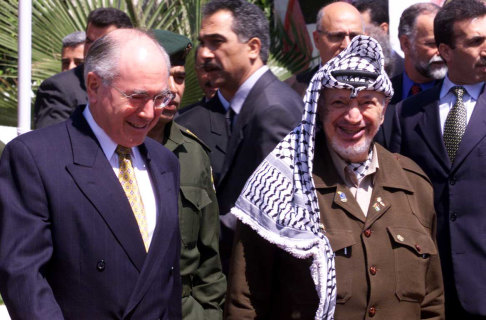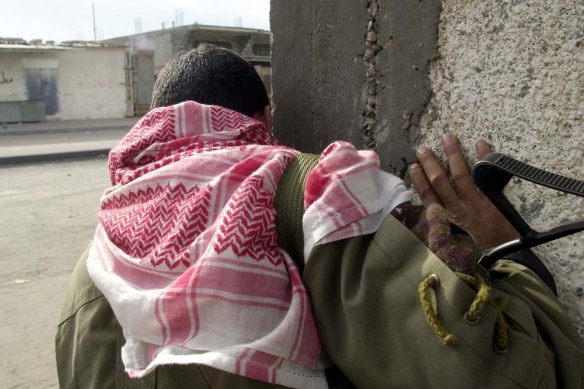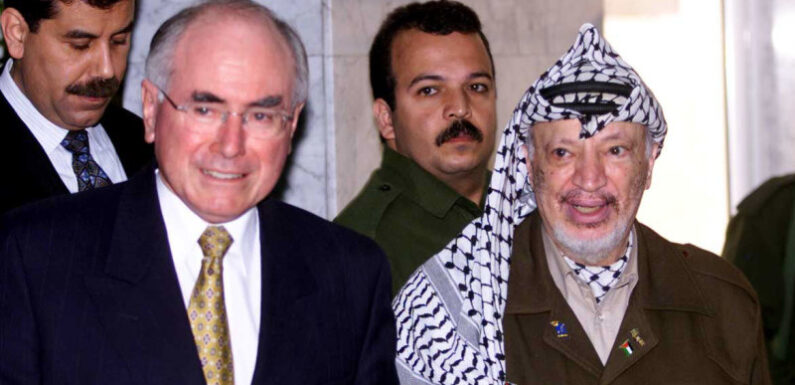
Save articles for later
Add articles to your saved list and come back to them any time.
An old man led us around the cemetery, headstones standing in perfect rows bordered with flowers and groomed lawns, a wall surrounding it all.
“This,” said the man, sweeping his arm in arc across the silent graves, “is where war always ends.”
The Gaza War Cemetery in Gaza City in 2018. Credit: AP
The man’s name was Ibrahim Jaradah snr.
Ibrahim had been taking care of the graveyard for more than half a century, just like his father before him. He wore on his jacket the medal of a Member of the Most Excellent Order of the British Empire (MBE).
The elderly Palestinian had received the medal for his work as the head gardener of the Gaza War Cemetery, one of the world’s vast chain of Commonwealth war graves. The quiet, almost unknown place lying in the crowded Gaza Strip, between Israel and the Mediterranean Sea, holds the remains of 263 Australians.
The Australians are from two old wars. Those from World War I were mostly from the Anzac Mounted Division and the Imperial Camel Corps, who suffered a bloody defeat in Gaza in April 1917. More died in World War II, mainly in the Australian military hospitals that were established there.
Ambulances of the Imperial Camel Corps at Rafa, Palestine, on February 12, 1918.Credit: Frank Hurley
The 263 Australians are among 3691 in the Gaza cemetery – 3082 of them British, 23 New Zealanders, 23 Canadians, 184 Turkish (Ottoman), 50 Indians and 36 Poles, plus small numbers of South African, Greek, Egyptian, German, French and Yugoslavian. Testament that war cares nothing for nationalities when it reaps its harvest.
Gaza City was basking under a hot sun and a rare period of relative peace when we met Ibrahim Jaradah snr in May 2000.
As Gaza’s besieged citizens currently endure deadly bombardments from the sky and a total blockade of its borders, with power, water and food supplies cut off – its Hamas terrorists having first all but invited retribution by raining mass death and fear upon neighbouring Israel – it is difficult to imagine a time when peace seemed possible.
But there it was. Yasser Arafat, head of the Palestinian Liberation Organisation and president of the Palestinian National Authority, was in the first months of 2000 in peace talks with Israeli prime minister Ehud Barak.
Israeli prime minister Ehud Barak, US president Bill Clinton and Palestinian leader Yasser Arafat were all smiles at Camp David in September 2000. Credit: AP
Those talks would end in September 2000 with the failure of US president Bill Clinton to broker any lasting peace agreement between Israel and the Palestinians at a meeting known as the Camp David Summit.
What Australian prime minister John Howard could bring to the process seemed a bit improbable.
He had been in previous days at Gallipoli for an Anzac commemoration that attracted about 14,000 people, had visited the Western Front in France where both his father and grandfather had fought in World War I, and had flown onto Jerusalem. Why not go to Gaza?
John Howard views graves at Tincourt-Boucly on the Western Front in April 2000.Credit: Mike Bowers
And so, followed by a slipstream of Australian journalists and guarded by Palestinian police every hundred metres along the route, Howard was driven to Gaza City.
I learned a little about the paranoia of the place, even in that time of uneasy peace, when I wanted to transmit a story from Arafat’s headquarters.
There was no phone reception in the vicinity at all. There were claims that Palestinian officials had been killed when they answered their mobile phones. The story went that their phones had been covertly loaded with small explosives by Israeli agents. Press a button to answer and the phone blew up.
One of Arafat’s aides led me to a secret basement served by secure phone and internet links, and watched very closely indeed as I touched the “send” button.
Upstairs, Howard and Arafat awkwardly brushed cheeks and took tea together. Howard sweetened the meeting with the promise of an extra $1 million for refugee relief – Gaza being, in effect, a teeming refugee camp.
John Howard meets with Arafat in Gaza.Credit: Mike Bowers
He and Arafat agreed, as is the polite way of these things, that their talks had been fruitful. They weren’t, of course.
Within four months, with the Camp David Summit a failure, violence returned to the Palestinian-Israeli relationship in what became known as the Second Intifada – an Arabic word meaning uprising.
Over the next few years, the intifada violence is estimated to have resulted in the deaths of about 3000 Palestinians and 1000 Israelis, plus 64 foreigners.
Meanwhile, back in May 2000, our Palestinian hosts, aware of Howard’s interest in war history and all things Anzac, ushered us to the city’s Commonwealth War Cemetery.
It seemed the only plot of green to be found in Gaza City, thanks to Ibrahim Jaradah and his family.
Palestinians came there with their families to picnic and to simply soak in the quiet, seeking a semblance of the tranquillity that others in the world beyond might take for granted.
The cemetery later took heavy damage from Israeli bombs and gunfire during offensives in Gaza in 2006 and 2009. Israel paid $36,000 in compensation for damage by its army after the 2006 attack. What Palestinians rendered homeless thought is not recorded.
Each time, war graves officials and the Jaradah family restored the cemetery’s old sense of calm. And through it all, the Jaradah family tradition continued: Ibrahim snr’s grandson, Ibrahim jnr, became head gardener some years ago.
A Palestinian soldier in the Gaza Strip in November 2000.Credit: AP
No one, however, can say right now whether the cemetery has survived the Israeli air strikes on Gaza over recent days. Old Ibrahim Jaradah snr held wisdom about such matters.
“This is where war always ends,” I hear him saying, his gaze on the graves.
Get the day’s breaking news, entertainment ideas and a long read to enjoy. Sign up to receive our Evening Edition newsletter.
Most Viewed in National
From our partners
Source: Read Full Article
